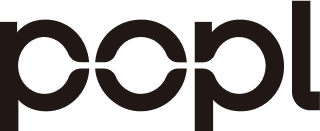In today's competitive business landscape, effective lead generation is critical to driving growth and success. Companies are continually seeking innovative strategies and tools to capture, nurture, and convert leads into loyal customers. Digital business cards and integrated lead generation tools have emerged as powerful assets in achieving these goals.
By leveraging real-time data, personalized engagement, and seamless CRM integration, businesses can streamline their lead generation efforts and enhance their overall marketing strategy.
This article explores successful case studies of companies that have effectively utilized lead generation tools, providing insights into their strategies and the impressive results they achieved.
The Importance of Lead Generation for Businesses
Lead generation is essential for businesses aiming to grow and scale. It directly impacts a company's ability to expand its customer base and increase revenue. Capturing leads is more than just collecting contact information; it's about understanding the needs, preferences, and pain points of potential customers. This knowledge allows businesses to tailor their marketing efforts, resulting in higher engagement and conversion rates.
For instance, lead capture software plays a pivotal role in automating the collection of leads from various sources like websites, social media platforms, and digital business cards.
This automation ensures no potential customer slips through the cracks, enhancing a business's ability to convert leads into paying customers. Effective lead capture is also a significant time-saver, freeing up valuable time for sales teams to focus on more strategic tasks rather than manual data entry.
Moreover, businesses that excel at lead nurturing generate 50% more sales-ready leads at a 33% lower cost, according to a study by HubSpot. By integrating lead capture software with Customer Relationship Management (CRM) systems, businesses can manage and nurture leads more effectively, leading to timely and personalized follow-ups that keep prospects engaged.
This not only enhances the customer experience but also increases the likelihood of converting leads into loyal customers.
Lead Generation Statistics and Trends
Understanding current trends and statistics in lead generation can provide valuable insights for businesses looking to refine their strategies. According to HubSpot, 61% of marketers consider generating traffic and leads as their top challenge.
Additionally, a BrightTALK study reveals that 53% of marketers allocate at least half of their budget to lead generation efforts. These figures highlight the critical importance of focusing on lead generation to maintain a competitive edge.
The landscape of lead generation is also evolving. Forbes reports a significant shift from traditional outbound marketing methods, such as cold calling and mass email blasts, to more personalized, inbound approaches.
Consumers today crave connections and experiences that feel unique to them. Businesses that leverage digital tools, like digital business card services and lead capture apps, are finding new and innovative ways to connect with potential customers.
For example, digital business cards, such as those offered by Popl, allow professionals to share their contact information and social media profiles seamlessly with just a tap. This technology not only simplifies the networking process but also ensures that contact information is always accurate and up-to-date.
By integrating these digital tools with CRM systems, businesses can streamline their lead capture and management processes, ultimately driving better results.
Furthermore, the use of marketing automation tools is on the rise. These tools enhance targeting, streamline communication, and boost return on investment (ROI) by automating repetitive tasks. This allows businesses to focus on more strategic activities, such as creating personalized content and engaging with leads.
As a result, companies that adopt these technologies are better positioned to capture high-quality leads and nurture them through the sales funnel.
Types of Lead Generation Tools
In the digital age, a variety of lead generation tools are available to help businesses capture, manage, and nurture leads more effectively. Understanding the different types of these tools can help you choose the right ones to fit your specific needs.
- CRM Systems: Customer Relationship Management (CRM) systems like Salesforce and HubSpot are pivotal in managing interactions with current and potential customers. These tools help track and analyze every interaction, providing valuable insights into customer behavior and preferences. By integrating lead capture capabilities, CRM systems streamline the process of managing leads from initial contact through to conversion.
- Lead Capture Software: Tools such as Popl's digital business cards and lead capture apps are designed to simplify the process of gathering contact information. These tools can capture leads from various sources, including websites, social media platforms, and in-person events. They ensure that all potential leads are collected in a centralized location for easy management and follow-up.
- Marketing Automation Platforms: Platforms like Marketo and Pardot automate repetitive marketing tasks such as email campaigns, social media posts, and ad management. These tools help businesses nurture leads through targeted and personalized communication, increasing the likelihood of conversion.
- Email Marketing Software: Email marketing remains a powerful tool for lead generation. Software like Mailchimp and Constant Contact enables businesses to create and send targeted email campaigns, track open rates and click-through rates, and segment their audience for more personalized communication.
- Social Media Management Tools: Tools like Hootsuite and Buffer help businesses manage their social media presence across multiple platforms. By scheduling posts, monitoring engagement, and analyzing performance, these tools assist in capturing leads through social media channels.
- SEO Tools: Search engine optimization (SEO) tools such as SEMrush and Moz help businesses improve their online visibility. By identifying relevant keywords, tracking website performance, and analyzing competitors, these tools drive organic traffic to your site, which can then be converted into leads.
- Landing Page Builders: Tools like Unbounce and Leadpages allow businesses to create high-converting landing pages. These pages are designed to capture visitor information through forms and calls-to-action, making them essential for generating leads from online traffic.

Top Lead Generation Tools in the Market
The market is saturated with a variety of lead generation tools, each offering unique features and benefits. Here are some of the top tools that can take your lead generation efforts to the next level:
- Salesforce: Known for its robust CRM capabilities, Salesforce offers a comprehensive platform for managing customer relationships and generating leads. With features like lead scoring, automation, and analytics, Salesforce helps businesses streamline their lead management process.
- HubSpot: HubSpot is a popular choice for inbound marketing and sales. Its CRM and marketing automation tools are designed to capture, nurture, and convert leads efficiently. HubSpot's user-friendly interface and integration capabilities make it a favorite among businesses of all sizes.
- Popl: Popl's digital business cards and lead capture apps revolutionize the way businesses network and generate leads. With customizable profiles and seamless sharing capabilities, Popl ensures that your contact information is always accessible and up-to-date. Integration with CRM systems further enhances lead management and follow-up processes.
- Marketo: Marketo is a powerful marketing automation platform that helps businesses engage with leads through personalized email campaigns, social media posts, and more. Its advanced analytics and lead scoring features enable businesses to prioritize high-quality leads and tailor their outreach strategies.
- Mailchimp: As a leading email marketing platform, Mailchimp allows businesses to create targeted email campaigns, track performance, and segment their audience for personalized communication. Its automation features simplify the process of nurturing leads through the sales funnel.
- Hootsuite: Hootsuite is a social media management tool that helps businesses manage their presence across multiple platforms. By scheduling posts, monitoring engagement, and analyzing performance, Hootsuite assists in capturing leads through social media channels.
- SEMrush: SEMrush is an all-in-one SEO tool that helps businesses improve their online visibility. With features like keyword research, site audits, and competitor analysis, SEMrush drives organic traffic to your site, which can then be converted into leads.
- Unbounce: Unbounce is a landing page builder that allows businesses to create high-converting landing pages. These pages capture visitor information through forms and calls-to-action, making Unbounce an essential tool for generating leads from online traffic.
How to Choose the Right Lead Generation Tools for Your Business
Selecting the right lead generation tools for your business can significantly impact your ability to attract, manage, and convert leads.
Here are some key factors to consider when making your choice:
Identify Your Goals
Begin by clearly defining your lead generation goals.
Are you looking to increase website traffic, improve lead conversion rates, or enhance customer engagement?
Understanding your objectives will help you identify tools that align with your business needs.
Evaluate Your Budget
Different lead generation tools come with varying costs. Assess your budget to determine which tools offer the best value for your investment.
Remember that some tools may have hidden costs, such as add-ons or premium features, so factor these into your decision.
Assess Compatibility with Existing Systems
Ensure that the tools you choose are compatible with your existing systems, such as your CRM or marketing automation platforms.
Seamless integration will streamline your processes and prevent data silos.
Consider Ease of Use
The usability of a tool is crucial for its adoption by your team.
Choose tools with intuitive interfaces and robust support resources. A steep learning curve can hinder productivity and reduce the tool's effectiveness.
Scalability
As your business grows, your lead generation needs may evolve.
Opt for tools that can scale with your business, offering advanced features and capabilities that you can leverage as your requirements become more sophisticated.
Look for Customization Options
Customization allows you to tailor the tool to your specific business processes and lead generation strategies.
Tools like Popl, which offer customizable lead capture forms, can be particularly beneficial in creating a personalized experience for your leads.
Check Reviews and Testimonials
Research user reviews and testimonials to gauge the effectiveness and reliability of the tools you're considering.
Look for feedback from businesses similar to yours to understand how the tool performs in a real-world context.
Trial Periods and Demos
Many lead generation tools offer trial periods or demos. Take advantage of these to test the tool's features and assess its suitability for your business before committing to a purchase.
How to Use Lead Generation Tools Effectively
Once you've selected the right lead generation tools for your business, it's essential to use them effectively to maximize their benefits.
Here are some best practices for leveraging lead generation tools:
- Set Up Proper Integrations: Ensure that your lead generation tools are seamlessly integrated with your CRM and other relevant systems. This will facilitate the automatic transfer of lead data, reducing manual entry and the risk of errors.
- Optimize Your Lead Capture Forms: Design lead capture forms that are concise and easy to complete. Ask for essential information only, as lengthy forms can deter potential leads. Tools like Popl allow for customizable lead capture forms that can be tailored to your specific needs.
- Leverage Automation: Utilize the automation features of your lead generation tools to streamline repetitive tasks. For instance, marketing automation platforms like Marketo can automate email campaigns, follow-ups, and lead scoring, freeing up time for your team to focus on high-value activities.
- Personalize Your Outreach: Personalization is key to engaging leads effectively. Use the data collected by your lead generation tools to tailor your communications. Segment your leads based on their interests, behavior, and demographics to deliver relevant and personalized content.
- Monitor and Analyze Performance: Regularly track the performance of your lead generation efforts using analytics tools. Monitor key metrics such as conversion rates, lead quality, and engagement levels. Tools like Google Analytics can provide valuable insights into your lead generation strategies' effectiveness.
- Implement Lead Scoring: Lead scoring helps prioritize leads based on their likelihood to convert. By assessing factors such as engagement level and fit with your buyer personas, you can focus your efforts on the most promising leads. CRM systems like Salesforce offer robust lead scoring capabilities.
- Regular Data Hygiene: Maintain clean and accurate data by regularly updating and cleaning your lead databases. Remove duplicate entries, correct inaccuracies, and ensure that your data is up-to-date. This will improve the efficiency of your lead generation and follow-up processes.
- Provide Continuous Training: Ensure that your team is well-trained in using the lead generation tools. Regular training sessions and updates on new features will help your team stay proficient and leverage the tools effectively.
- Foster Collaboration Between Teams: Encourage collaboration between your marketing and sales teams. Share insights and feedback on lead quality and follow-up strategies. Tools like Popl Teams facilitate seamless communication and coordination, enhancing overall lead management.

Integrating Lead Generation Tools into Your Marketing Strategy
Integrating lead generation tools into your marketing strategy is essential for creating a seamless and efficient process that captures, nurtures, and converts leads.
Here's how to effectively integrate these tools into your overall marketing strategy:
- Define Clear Objectives: Before integrating any tools, clearly define your lead generation goals. Whether it’s increasing the number of leads, improving lead quality, or enhancing lead nurturing, having specific objectives will guide your tool selection and integration process.
- Choose the Right Tools: Select lead generation tools that align with your marketing goals and integrate well with your existing systems. Consider tools that offer features like lead scoring, marketing automation, CRM integration, and data analytics to streamline your processes.
- Map Out Your Lead Generation Funnel: Create a detailed map of your lead generation funnel, from initial contact to conversion. Identify key touchpoints where lead generation tools can be integrated to capture and nurture leads effectively.
- Integrate with Your CRM: Ensure your lead generation tools are integrated with your Customer Relationship Management (CRM) system. This integration will allow for seamless data transfer, enabling your sales and marketing teams to access and act on lead information efficiently.
- Automate Lead Capture and Nurturing: Use marketing automation tools to automate lead capture and nurturing processes. Automated workflows can help deliver personalized content to leads based on their behavior and engagement, increasing the chances of conversion.
- Utilize Data Analytics: Leverage the analytics features of your lead generation tools to gain insights into lead behavior and campaign performance. Use this data to refine your strategies and improve your lead generation efforts.
- Create Targeted Content: Develop content that resonates with your target audience. Use the insights gained from your lead generation tools to create personalized and relevant content that addresses the specific needs and pain points of your leads.
- Segment Your Leads: Segment your leads based on criteria such as demographics, behavior, and engagement levels. This segmentation allows for more targeted and effective marketing campaigns, ensuring that your messages are relevant to each group.
- Measure and Optimize: Continuously measure the performance of your lead generation efforts. Use the data and insights provided by your tools to identify areas for improvement and optimize your strategies for better results.
Best Practices for Maximizing Lead Generation Efforts
To maximize your lead generation efforts, it’s important to follow best practices that enhance your ability to capture, nurture, and convert leads.
Here are some key best practices:
- Personalize the Lead Capture Process: Personalization helps build trust with potential leads and sets you apart from the competition. Tailor your lead capture forms and communication to reflect the interests and needs of your target audience.
- Leverage Multiple Channels: Utilize a multi-channel approach to reach a wider audience. Combine email marketing, social media, SEO, content marketing, and paid advertising to capture leads from various sources.
- Optimize Landing Pages: Ensure your landing pages are optimized for conversions. Use clear and compelling calls-to-action (CTAs), keep forms short and simple, and ensure that the landing page design is user-friendly and mobile-responsive.
- Implement Lead Scoring: Use lead scoring to prioritize leads based on their likelihood to convert. Factors such as engagement, demographics, and behavior can help you identify high-value leads and focus your efforts on them.
- Nurture Leads with Targeted Content: Develop a lead nurturing strategy that delivers personalized and relevant content to leads at different stages of the buyer's journey. This can help build relationships and guide leads towards conversion.
- Set Up a Service-Level Agreement (SLA): Establish a service-level agreement (SLA) between your marketing and sales teams. Clearly define the criteria for marketing-qualified leads (MQLs) and sales-qualified leads (SQLs), and set expectations for lead follow-up times.
- Ensure Data Hygiene: Maintain clean and accurate lead data by regularly updating and cleaning your databases. This ensures that your communications are relevant and targeted, and helps avoid wasted efforts on outdated or incorrect information.
- Use Retargeting Campaigns: Implement retargeting campaigns to re-engage leads who have shown interest but haven’t yet converted. Use targeted ads to remind them of your offerings and encourage them to take action.
- Continuously Test and Optimize: Regularly test different elements of your lead generation campaigns, such as CTAs, landing page designs, and email subject lines. Use A/B testing to determine what works best and optimize your strategies accordingly.
- Provide Continuous Training: Ensure your marketing and sales teams are well-trained in using lead generation tools and following best practices. Regular training sessions can keep your teams up-to-date with the latest techniques and tools.
Case Studies of Successful Lead Generation Campaigns
Integrating lead generation tools effectively into your marketing strategy can lead to significant improvements in lead acquisition and conversion rates.
Below are real-world case studies that highlight the success of various lead generation campaigns, with links to the sources for further reading.
Sales Executive at Industry Conferences
Overview: Digital business cards used by a sales executive attending industry conferences proved to be an efficient tool for lead capture and follow-up.
Case Study: A sales executive attending industry conferences used Popl digital business cards to quickly exchange contact information with potential clients and partners. The immediate capture of leads into their CRM allowed for timely and personalized follow-ups.
Results:
- Higher conversion rates.
- More closed deals due to timely and personalized follow-ups.
Read More: Strategies for Effective Engagement
Freelancer Updating Portfolio
Overview: A freelancer leveraged digital business cards to ensure prospective clients always had access to their latest work.
Case Study: A freelancer who regularly updates their portfolio uses Popl digital business cards to share their latest projects with potential clients. This ensured that prospective clients had access to their most recent work, increasing their chances of securing new projects.
Results:
- Increased client engagement.
- Higher project acquisition rate.
Read More: Best Digital Business Card for Freelancers
General Contractor at Networking Events
Overview: A general contractor used a well-designed digital business card to showcase their portfolio and client testimonials at industry conferences and networking events.
Case Study: By using a digital business card with embedded links to their latest project portfolio, client testimonials, and a video introduction, a general contractor provided a comprehensive view of their expertise in a single, easily accessible format.
Results:
- Strong first impressions.
- Simplified follow-up process with potential clients.
Read More: Creating Impactful General Contractor Business Cards
Popl Digital Business Cards for Realtors
Overview: Popl digital business cards helped realtors effectively manage and convert leads through seamless contact information sharing and CRM integration.
Case Study: Realtors using Popl digital business cards were able to instantly link potential leads to a wealth of information, including their customizable Popl profiles, which showcased their unique brand and portfolio.
Results:
- Enhanced lead generation performance.
- Improved follow-up and conversion rates.
Read More: Best Digital Business Cards for Realtors
Sales and Marketing Alignment with Popl Teams
Overview: Popl Teams facilitated seamless collaboration and lead management, boosting sales performance for businesses.
Case Study: Businesses using Popl Teams benefited from real-time analytics and streamlined lead capture processes, eliminating the hurdles associated with traditional follow-up methods.
Results:
- Efficient lead management.
- Enhanced sales performance through better collaboration and data-driven insights.
Read More: Popl Teams
Conclusion
The case studies presented highlight the transformative impact that well-integrated lead generation tools can have on a business's ability to attract, manage, and convert leads.
From digital business cards enhancing networking at industry events to automated CRM systems streamlining follow-up processes, these tools provide significant advantages in today's digital age. By adopting best practices and leveraging the right tools, businesses can optimize their lead generation efforts, resulting in higher engagement, improved conversion rates, and sustained growth.
As these examples demonstrate, the strategic use of lead generation tools is not just a competitive advantage but a necessity for businesses aiming to thrive in an increasingly dynamic marketplace.















